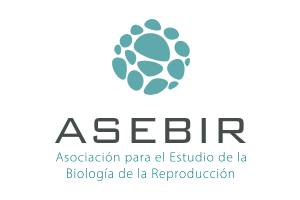Introduction: Minimal stimulation protocols for in vitro maturation (IVM) are characterized by the lowamount of hormones required. Therefore, using these protocols translated into a decreased risk of ovarian hyperstimulation syndrome (OHSS), a reduced number of painful and uncomfortable hormone injections, and fewer side effects compared to the standard stimulation protocols for in vitro fertilization (IVF).
Objective: The study aimed to characterize the hormonal profiles during minimal stimulation protocol and the side effects of this procedure.
Participants/materials and methods: Thirty-seven normal responder donors (28±3.9 years, BMI:22±2.9, AMH: 4.0±2.4) underwent minimal stimulation protocol with injections during 3-4 days using 600 IU of rFSH with hCG trigger, measuring hormonal levels on the day 0 (estradiol and progesterone),the day of trigger (estradiol, progesterone, follicle-stimulating hormone (FSH) and luteinizing hormone(LH), and the day of oocyte pick-up (OPU; estradiol, progesterone, FSH and LH). After stimulation, a questionnaire on adverse effects was documented immediately after OPU and 8-10 hlater, recording the pain level (scale from “0” (no pain) to “10” (the most pain), and if it was necessary to take any pain medication. In addition, these side effects were compared with donors who underwent standard stimulation for IVF (23 cycles).
Results: During the stimulation until the OPU day, the mean levels of estradiol slightly increased from40.54±38.33 to 398.14±280.61 pg/mL, and the mean levels of progesterone ranged from 1.57±3.41 to0.31±0.13 μg/L. Between the day of trigger and OPU day, the levels of FSH decreased from 7.93±2.92 to13.02±5.61 mUI/mL, and LH increased from 2.05±3.01 to 4.66±4.26 mIU/mL
After oocyte pick-up, a higher percentage of donors reported no pain (level=”0”) with the minimal stimulation than with the standard protocol (27.0% minimal; 21.7% standard) and even more differently 8hours later (37.8% minimal; 4.3% standard). Moderate levels of pain (from “0” to “4”) were similar between the groups directly (40.5% minimal; 52.1% standard), as well as 8 hours after the OPU (40.54%minimal; 43.4% standard). However, lower levels of intensive pain (from “5” to “10”) 8 hours after theOPU were reported in patients undergoing minimal (21.6%) than standard stimulation (52%).Regarding taking pain medication, there was no difference between protocols immediately after oocyte pick-up (9.1% and 8.7% in the minimal and standard stimulation, respectively). However, 8 hours later, only 20.5% under minimal stimulation compared to the 56.5% of the donors under standard protocol required medication.
Conclusion: These results demonstrate that donors under minimal hormonal stimulation have stable hormone levels during and after stimulation, reducing the risk of hyperstimulation. Moreover, women have lower pain levels and require less supplemental medication compared to standard stimulation.
